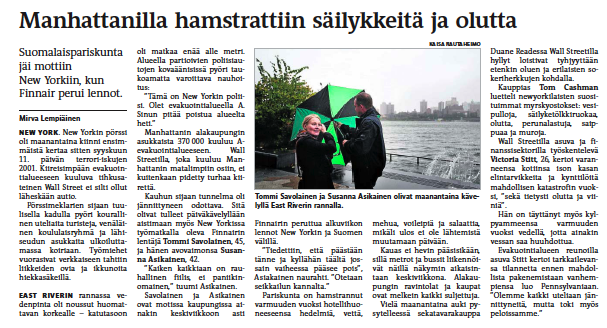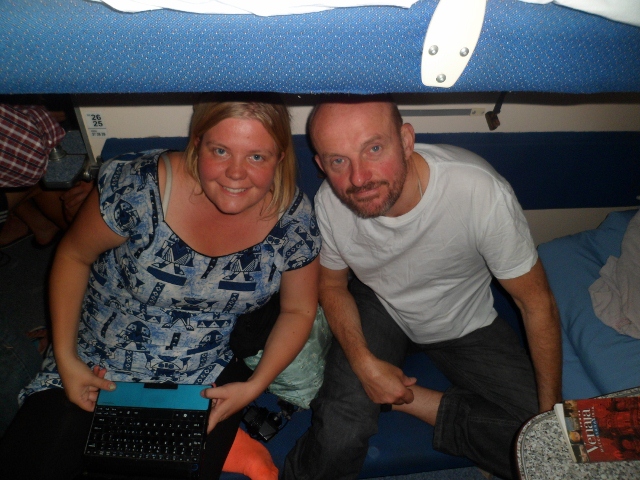If you have been keeping up with me on Facebook or Twitter (@mirva08), you may have noticed I’m currently in Nicaragua, my country number 62. After a brief 10-day stint in Costa Rica, I’ve now spent about five weeks exploring the “Unique and Original” Nicaragua, as the tourism authority’s new slogan goes. My friend Mira and I even managed to get ourselves featured in a local online magazine promoting Big Corn Island as a tourist destination. See how cozy I look in that hammock?

Being back on the Central American isthmus has got me thinking about quite a few things – including the last time I was here on these latitudes, in 2011. Back then I did a 3-month tour of the Caribbean and Central America, starting from the wild carnival in Trinidad and Tobago (which is actually going on right now!), and continuing onto Guyana, Jamaica, Cuba, Mexico, Belize and Guatemala.
While I had some fun times in all of those countries, I felt a closer connection with only a couple of them. I have since then wondered many times why some places “click” with you so well and just feel right, while others don’t.
That brings me to a case in point – Guyana. This is a country that made a lasting impact on me and was definitely a place I was sad to leave behind. To see the beauty of this land, check out the photos of this “Forgotten Guyana” article I wrote for Helsingin Sanomat (and if you are not Finnish-challenged, you can even read the article here):
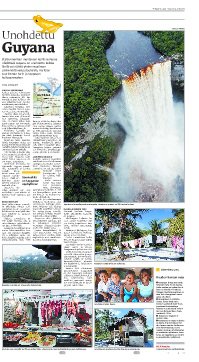
I first became intrigued by Guyana when I traveled around South America in 2008. At some point during my 5-month trip I looked at the map and saw this relatively small country next to Venezuela that I realized I knew nothing about! I asked other travelers I met along the way if they had been to Guyana, or were planning on going. The answer was always no.
Nobody seemed to know anything about this place, and even the Lonely Planet has no guidebook for the country. It was obvious that I needed to go check out whether Guyana actually exists and what goes on there.
My opportunity to visit came up pretty unexpectedly in 2011. Once carnival in Trinidad was over, I was trying to figure out where to continue next. I then noticed that I could buy a one-way ticket from Port of Spain to Georgetown, Guyana’s capital, for $160 on Caribbean Airlines. Not bad! I found the ticket at 10 p.m. and the departure was at 6 a.m. the next day. I figured that if I skipped sleep for that night, I could do laundry, pack up my bags and be ready to head for the airport at 4 a.m. Sold!
As soon as I boarded the one-hour flight from Trinidad to Guyana, I knew I had stepped off the beaten path. The plane was only about a third full. Most people on the plane seemed to be locals, and were of Indian descent. Some 60 percent of Guyanese people, I later learned, have their roots in East India. Their ancestors were brought to Guyana as indentured servants back in the 1800’s when the English ruled the country. The rest of the Guyanese people are a mix of black people (40 percent), white folks, Native Americans (called Amerindians there) and something in between. Guyana is the only English-speaking country in South America, though the English there is of the Caribbean variety and very hard to understand (at least for me…).
On the plane I struck up conversation with a Guyanese man living in Canada, and got lots of good advice on where to go and what to do. He also offered to give me a ride to the center of Georgetown as his wife was about to pick him up at the airport. Sweet!
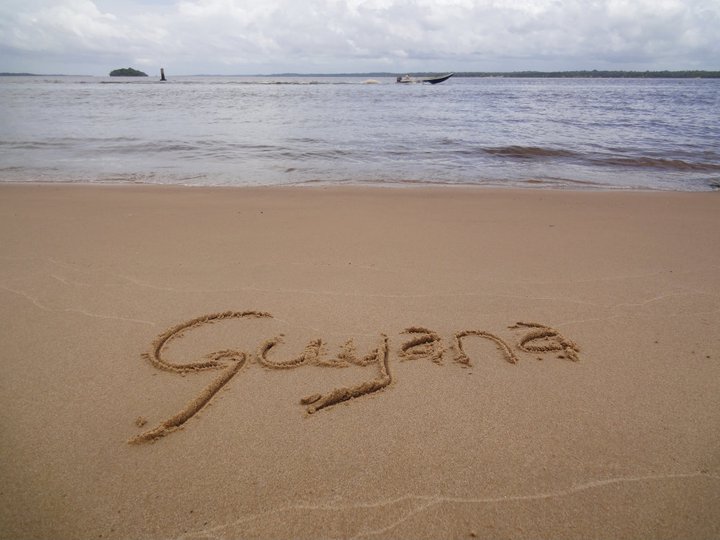
Much to my dismay, my arrival into the country wasn’t as smooth as I had hoped for. Having bought my ticket at such short notice, I didn’t have a plane ticket out of Guyana yet. And I didn’t know if I even wanted to buy one, as the man on the plane had told me I could take a bus to Suriname or to Brazil, and go from there to Venezuela.
But Guyanese immigration officials didn’t think that I should have the luxury of deciding my travel route on a later date. The serious and strict-looking ladies told me that I had to buy a ticket out of the country right then and there, or I was going to be flown back to Trinidad & Tobago. Blaah. Where’s your carnival spirit, people?
With immigration officials giving me a bad first impression of the country, I quickly decided to just stay for 8 days. I figured that if Guyana was as unwelcoming as its immigration officials, I didn’t want to waste too many of my precious travel days there. So on a whim, I bought a $300 ticket to Jamaica for the following week (a semi-random choice: I was heading to Cuba and figured that Jamaica was on the way).
After finally clearing customs I was lucky enough to run into the man from the plane who had offered me a ride to town. He was still waiting for his wife to come pick him up. That was great news for me, because it turned out my ATM card didn’t work in the airport’s cash machine and I couldn’t get any cash out (always a nice feeling in a foreign country, eh!). Catching a cab to the center of Georgetown would have thus been a challenge.
So my week in Guyana started with the friendly couple dropping me off at Hotel Tropicana in the center of Georgetown, and it ended up being quite an interesting eight days. The time actually felt more like three weeks, and included a lot of highs and lows.
The lows were mostly due to feeling pretty lonely at times: it turned out I was the only guest at my hotel and that there were barely any other travelers in the whole country. Guyana receives only about 100,000 international visitors per year (compared with Jamaica’s 600,000), and of those only 5 percent are coming strictly for tourism purposes. The great majority come for business conferences, to do volunteer work with NGOs or to visit family or friends. Thus I got stared at a whole lot wherever I went, whether it was onboard a river boat crossing the Essequibo, South America’s third largest river, or visiting the local market in Georgetown.

Walking around Georgetown and looking at the white wooden Victorian houses, surprisingly many of which were beautifully renovated, I felt like I had been tossed back to the 1800s. I was in this country that everyone had forgotten existed. There were at times more donkeys on the street than people. No wonder I had never met anybody that had traveled to Guyana. The place was empty! At least this was the case on a Sunday afternoon. On Monday the city’s pace picked up a bit, but it was by no means a buzzing metropolis.
The highlights of the week were plentiful, though. Through some contacts from the traveler’s networking site Couchsurfing.org I got to know plenty of locals, and got to witness a Hindu ceremony and an Indian wake (referring to the night before a funeral. The deceased person’s friends all get together to eat, chat and play Dominos).

Some of my new pals organized for us to go visit an Amerindian village nearby Lake Mashabo, which was an incredibly beautiful lake with palm trees growing out of it! I couldn’t believe my eyes. Can trees grow out of water? I hadn’t thought so… And later on I heard it was actually an artificial lake and that the trees were dying little by little. Boohoo.

Over the week I got invited to stay in local houses in the town of Bartica and the Essequibo Coast and tried various traditional Guyanese-Indian foods. My favorite was smashed pumpkin with roti, the fluffy Indian flatbread. I also tasted some really tasty chicken curry. One of my favorite meals was lunch at Coalpot, a small restaurant in Georgetown where you could pick and choose your favorites from a selection of Indian and African dishes, with mashed potatoes and macaroni pie thrown into the mix. The total price for the meal came to about $4.
Overall Guyana isn’t a cheap traveling country though, even if it is the poorest in South America: accommodation starts from $15-20 for a basic room. But considering all the offers I had to stay with my new local friends, the price of accommodation wasn’t really an issue. A bigger problem was the price of doing excursions and sightseeing. Now THAT is expensive in Guyana, mostly because there aren’t that many tourists and thus there’s no competition between travel agencies. Day trips to the Amerindian villages and nearby monasteries start at $150 per person, and a tour to the Kaieteur waterfall, one of the world’s biggest single-drop waterfalls, costs a minimum of $195. That’s because it’s located in the middle of the country in the dense tropical rainforest, and you have to fly there on a small plane. Going by land would mean driving a couple of days on bumpy roads, and then trekking for three days through the woods.
Since seeing Kaieteur was one of my biggest incentives for traveling to Guyana, I decided to splurge on the plane ride. But I soon found out that the price of the trip wasn’t the only problem: another one was the scheduling of it. None of the tour companies knew whether they’d have a trip going all week. It would all depend on whether other tourist would show up and sign up for the flight. Considering I hadn’t seen any other travelers during my time in Georgetown, I didn’t have high hopes of this happening.
In the end they did get a group of 9 together (comprised of people working with NGOs or visiting friends in the country), but it wasn’t until my last day in Guyana and the price was $270 instead of $195. This was because the tour also included a visit to another smaller waterfall in Southern Guyana, near the border of Brazil.
I decided to go for it anyway, even though this meant largely missing out on the colorful Indian Holi celebrations that were the same day (or Phagwa, as it’s called in Guyana). And I’m super happy that I went for it! It just might have been the best $270 I ever spent.
The whole day was pretty surreal, but the most amazing sight was flying over the solid green rainforest for an hour and suddenly seeing the huge Kaieteur waterfall pop up in middle of it all.
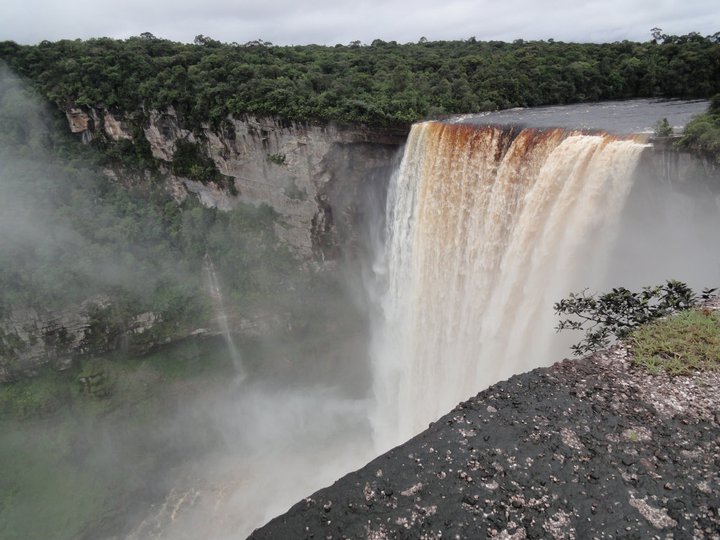
Our little 10-seater plane (where I got to be the co-pilot!) circled above it for a few minutes, and we could see the masses of water falling down to the bottom of the valley far underneath. Whoa! The drop is a whopping 7000 feet. Venezuela’s Angel Falls is of course higher, but that one is actually several waterfalls falling down simultaneously on top of one another. So as far as single waterfalls go, Kaieteur is the king. We landed on its tiny airstrip and went to admire it from several viewpoints.

Next we flew to visit (and to take a shower in!) the other more humble waterfall, Oruinduik, near the border of Brazil. There we got to meet some Amerindian kids. Apparently they always paddle over from the Brazilian side by kayaks when they see a small plane like ours arriving (which the guide said happens about once a week. Kaieteur gets more visitors than that, but most people don’t bother paying for the Oruinduik leg of the trip). The kids come over mostly for the joy of seeing some new faces in their isolated surroundings, but also in hopes of candy, food or some change. There were about six or seven kids, along with an older woman who was holding a baby. They stared at us in a shy but friendly manner. The girls all had long black hair, one of the boys had almond-shaped eyes. All had small holes and stains in their clothes, but were otherwise looking pretty sharp considering they live hours away from the nearest big town.
I took some photos of the kids and gave them some small bills for a couple of US dollars’ worth. Not knowing if they understood English, I slowly asked one of them “what-is- your-name?” He quickly answered with the confidence of an army soldier: “Kevin! Kevin Peter!”
So go figure. Even a Native American child who lives hundreds of miles from civilization has a name much easier than mine. Hah! 🙂

Needless to say, my time in Guyana was truly memorable and still brings a smile on my face. After just a few days there, I could tell this was a place where I felt right at home, though it looks nothing like my home country on the outside. There’s just something about Guyana that clicked with me.
Do you remember visiting a country that just felt right to you? What do you think it was that made you feel this way?

